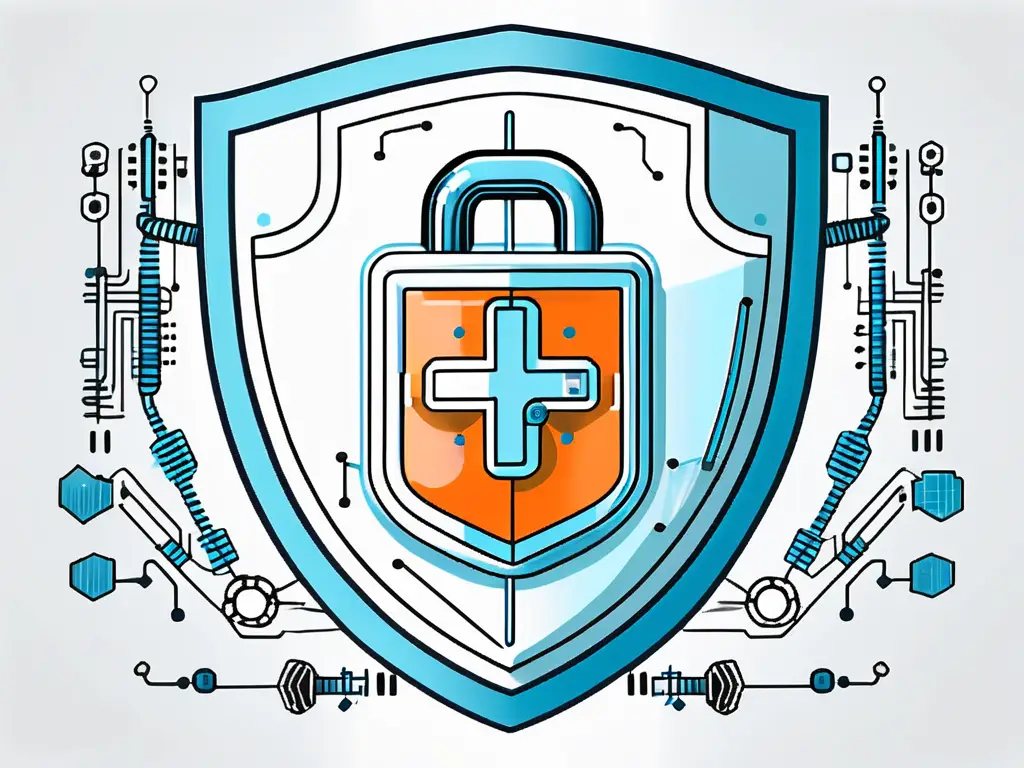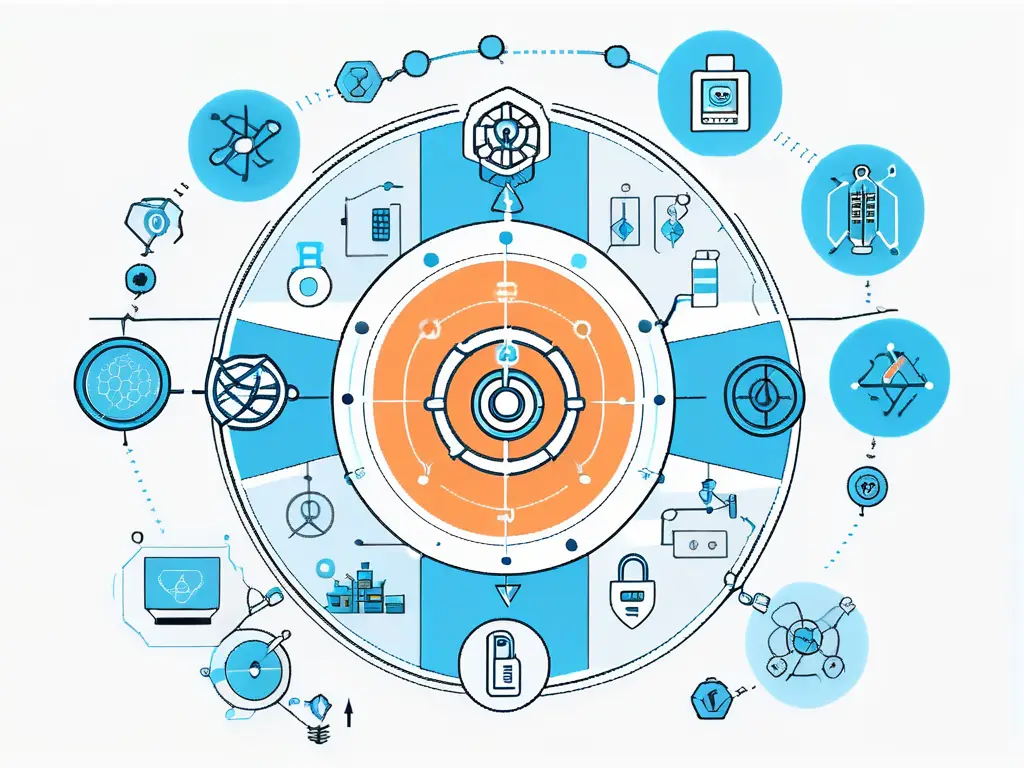Updated November 10, 2024
Safeguarding sensitive patient data and ensuring the integrity of medical devices is of utmost importance. Two frameworks that have emerged to address these concerns are SPDF (Secure Product Development Framework) and TPLC (Total Product Development Lifecycle). This article will delve into the intricacies of SPDF and TPLC, exploring their roles, features, benefits, and limitations in medical device cybersecurity.
Understanding SPDF and TPLC
Defining SPDF
SPDF is a comprehensive approach encompassing secure coding practices, risk assessment, vulnerability management, and continuous monitoring. It provides a structured framework for developing and maintaining secure medical devices throughout their lifecycle.
On the other hand, Total Product Development Lifecycle (TPLC) takes a broader perspective, considering all stages of a product’s existence. From the initial concept to the final disposal, TPLC encapsulates the entire journey of a medical device. This holistic methodology emphasizes integrating risk management, including cybersecurity measures, to ensure medical devices’ safety, efficacy, and quality. By incorporating cybersecurity practices at every phase of development, TPLC aims to mitigate potential threats and vulnerabilities that could compromise the integrity of the medical device.
Defining TPLC
TPLC is a holistic methodology encompassing all stages of a product’s development, from conceptualization to disposal. It emphasizes the need for integrated risk management, including cybersecurity, to ensure medical devices’ safety, efficacy, and quality.
The Role of SPDF in Medical Device Cybersecurity

Given the increasing connectivity and digitization of medical devices, cybersecurity is critical to healthcare technology. SPDF plays a crucial role in ensuring the security and integrity of these devices throughout their lifecycle.
Key Features of SPDF
SPDF incorporates a range of essential features to enhance the security posture of medical devices. These include:
- Secure coding practices
- Threat modeling and risk assessment
- Vulnerability management
- Incident response planning
- Continuous monitoring and updates
By integrating these features into the development process, SPDF helps mitigate potential security risks associated with medical devices.
SPDF promotes a proactive approach to cybersecurity by emphasizing the importance of security considerations at every stage of the medical device development lifecycle. This comprehensive approach ensures that security measures are not just an afterthought but are integrated from the initial design phase onwards.
Benefits and Limitations of SPDF
SPDF offers several advantages, such as:
- Enhanced security and protection against cyber threats
- Improved compliance with regulatory requirements
- Early detection and mitigation of vulnerabilities
However, it is important to acknowledge the limitations of SPDF. These may include:
- The need for skilled personnel to implement and maintain the framework
- Potential impact on development timelines and costs
- The dynamic nature of cybersecurity threats requires continuous updates and adaptations to the framework
Despite these challenges, the benefits of implementing SPDF in medical device cybersecurity far outweigh the limitations. Organizations that prioritize security by adopting SPDF can enhance patient safety, protect sensitive data, and maintain the trust of healthcare providers and patients alike.
The Role of TPLC in Medical Device Cybersecurity

Medical device cybersecurity is a critical aspect of healthcare technology, especially with the increasing connectivity and digitization of medical devices. TPLC ensures that cybersecurity is integrated seamlessly into every medical device’s development and deployment stage.
Key Features of TPLC
TPLC emphasizes integrated risk management and incorporates various features, such as:
- Market analysis and user needs assessment
- Design and development
- Manufacturing
- Distribution and installation
- Maintenance and post-market surveillance
TPLC aims to ensure that medical devices are secure and reliable by integrating cybersecurity considerations throughout these stages.
TPLC also focuses on regulatory compliance, ensuring that medical devices meet the cybersecurity standards set forth by regulatory bodies such as the FDA and ISO. This compliance not only enhances the security of the devices but also instills trust in healthcare providers and patients regarding the safety and efficacy of the technology.
Benefits and Limitations of TPLC
TPLC offers several benefits for medical device cybersecurity, including:
- Comprehensive risk management throughout the entire lifecycle
- Integration of cybersecurity from the inception of product development
- Improved product quality and reliability
However, TPLC also has its limitations, such as:
- Potential complexity and resource requirements, particularly for smaller organizations
- Possible challenges in adapting to evolving cybersecurity threats
- The need for collaboration and coordination across various stakeholders
Despite these limitations, adopting TPLC in medical device cybersecurity is crucial for safeguarding patient data, ensuring the integrity of medical procedures, and maintaining overall trust in healthcare technology.
Comparing SPDF and TPLC in Cybersecurity
When delving deeper into the comparison between SPDF and TPLC in medical device cybersecurity, it is essential to consider these frameworks’ practical implications and real-world applications. By examining how these frameworks are implemented in healthcare settings, we can better understand their effectiveness and suitability for different scenarios.
Similarities Between SPDF and TPLC
SPDF and TPLC share similarities in addressing cybersecurity concerns in medical devices. These include:
- Recognition of the importance of cybersecurity in the healthcare industry
- Integration of risk management principles
- Emphasis on continuous monitoring and updates
These shared elements underscore the collective goal of ensuring the security and integrity of medical devices.
The alignment of SPDF and TPLC with regulatory standards and guidelines specific to medical device cybersecurity further solidifies their significance in enhancing healthcare technologies’ overall safety and reliability.
Differences Between SPDF and TPLC
Despite the overlaps, SPDF and TPLC also have distinct characteristics that set them apart:
- SPDF primarily focuses on cybersecurity, whereas TPLC takes a broader approach encompassing the entire product development lifecycle.
- SPDF emphasizes secure coding practices, vulnerability management, and continuous monitoring, while TPLC addresses cybersecurity concerns in conjunction with other stages of product development.
- SPDF may require specialized skills and resources for implementation, whereas TPLC may involve greater stakeholder coordination.
Understanding these differences is crucial when deciding which framework to adopt for medical device cybersecurity.
Exploring case studies and success stories of organizations implementing either SPDF or TPLC can offer valuable insights into each framework’s practical outcomes and challenges, aiding stakeholders in making informed decisions regarding their cybersecurity strategies.
Future Trends in Medical Device Cybersecurity
The Evolving Threat Landscape
The threat landscape for medical device cybersecurity is continually evolving, with hackers becoming more sophisticated in their methods. Ongoing vigilance and proactive measures are necessary to combat these emerging threats.
Innovations in Secure Product Development and Lifecycle Management
The field of secure product development and lifecycle management is constantly innovating to stay ahead of emerging cybersecurity challenges. These advancements include enhanced encryption protocols, machine learning algorithms for threat detection, and secure communication frameworks.
One notable innovation in secure product development is the implementation of blockchain technology. Initially designed for secure financial transactions, blockchain is now being explored as a potential solution for medical device cybersecurity. Utilizing blockchain allows medical devices to maintain a decentralized and tamper-proof record of their operations, making it difficult for hackers to manipulate or compromise the device’s functionality.
Another area of innovation is integrating artificial intelligence (AI) into medical device cybersecurity. AI-powered systems can continuously monitor and analyze device behavior, detecting abnormal patterns or suspicious activities. This proactive approach enables early detection of potential threats, allowing healthcare providers to take immediate action and prevent security breaches.
Advancements in secure communication frameworks enhance the protection of sensitive patient data. Secure communication protocols, such as Transport Layer Security (TLS), are being implemented to encrypt data transmission between medical devices and healthcare systems. This ensures that patient information remains confidential and inaccessible to unauthorized individuals.
By leveraging these innovations, organizations can bolster their cybersecurity practices and ensure the safety and integrity of medical devices.
Conclusion
As the medical device industry continues to confront the challenges of an evolving cyber threat landscape, the need for a trusted cybersecurity partner becomes paramount. Blue Goat Cyber stands at the vanguard of cybersecurity excellence, offering bespoke B2B services encompassing the full medical device cybersecurity spectrum. Our veteran-owned company is committed to ensuring your compliance with HIPAA, FDA regulations, and beyond, providing the expertise necessary to navigate these complex requirements with confidence.
With Blue Goat Cyber, you gain more than just a service provider; you gain a partner whose proactive approach and cutting-edge solutions are tailored to your unique needs. Whether you’re a startup or an established enterprise, our team of certified experts is ready to help you integrate SPDF and TPLC principles into your product development lifecycle, ensuring that your medical devices are not only secure but also resilient against the threats of tomorrow.
Don’t let cybersecurity concerns hinder your innovation in the healthcare sector. Contact us today for cybersecurity help and take the first step towards a secure and successful digital future with Blue Goat Cyber. Embrace security, embrace success.


